The Thin Line
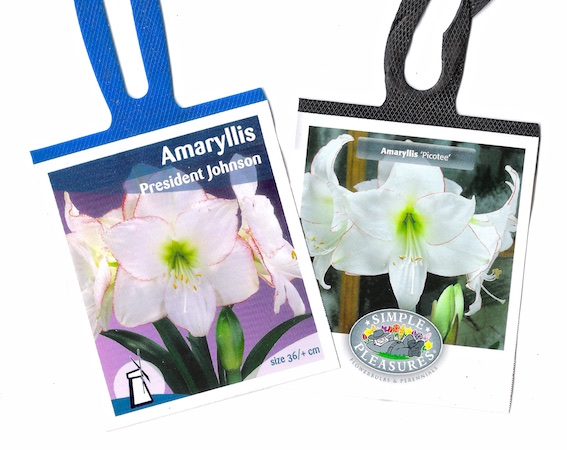
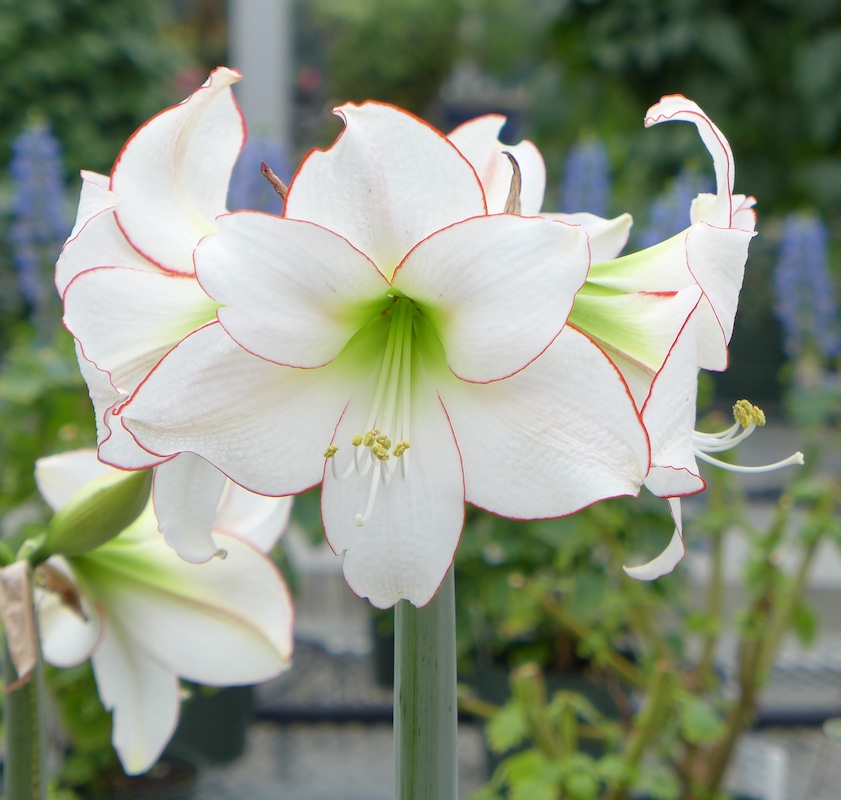
One of the most perplexing cultivar groups in all Hippeastum-dom belong to the several selections flying under the name ‘Picotee’. Throw in a couple of other offerings that work on similar ground (white with thin red piping) such as ‘President Johnson’ and you have confusion that borders on batty. While others were apparently breeding such types prior to the 1950’s, it was the Ludwig company that officially registered the name ‘Picotee’ in 1958. Shortly thereafter, the company released different variants as ‘Red Lining’ and ‘Picotee Petticoat’, perhaps realizing the original had some shortcomings.
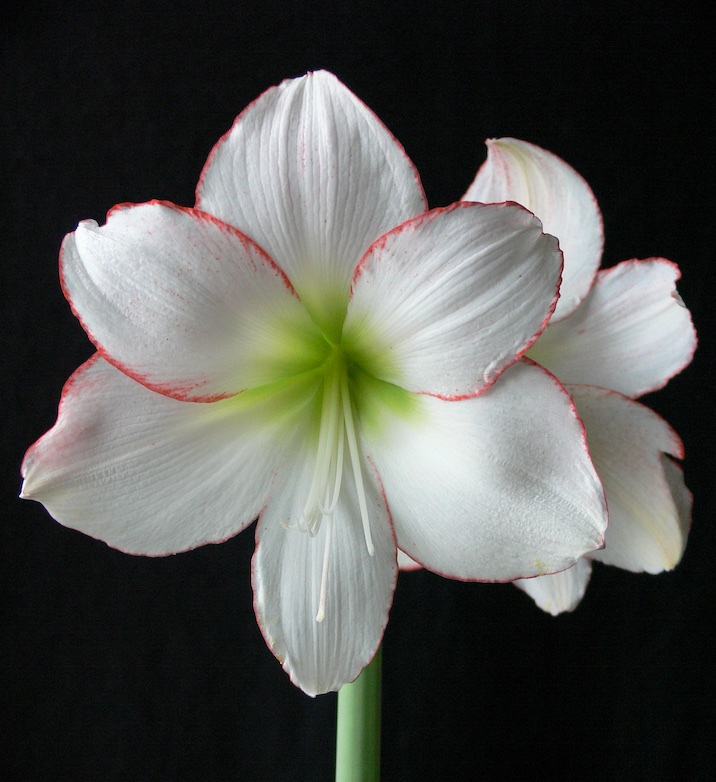
Currently there are probably about five amaryllis clones sporting pure white flowers edged to some extent in red, sometimes with a bit of extra red flushing, spotting or flecking. All are sold interchangeably.
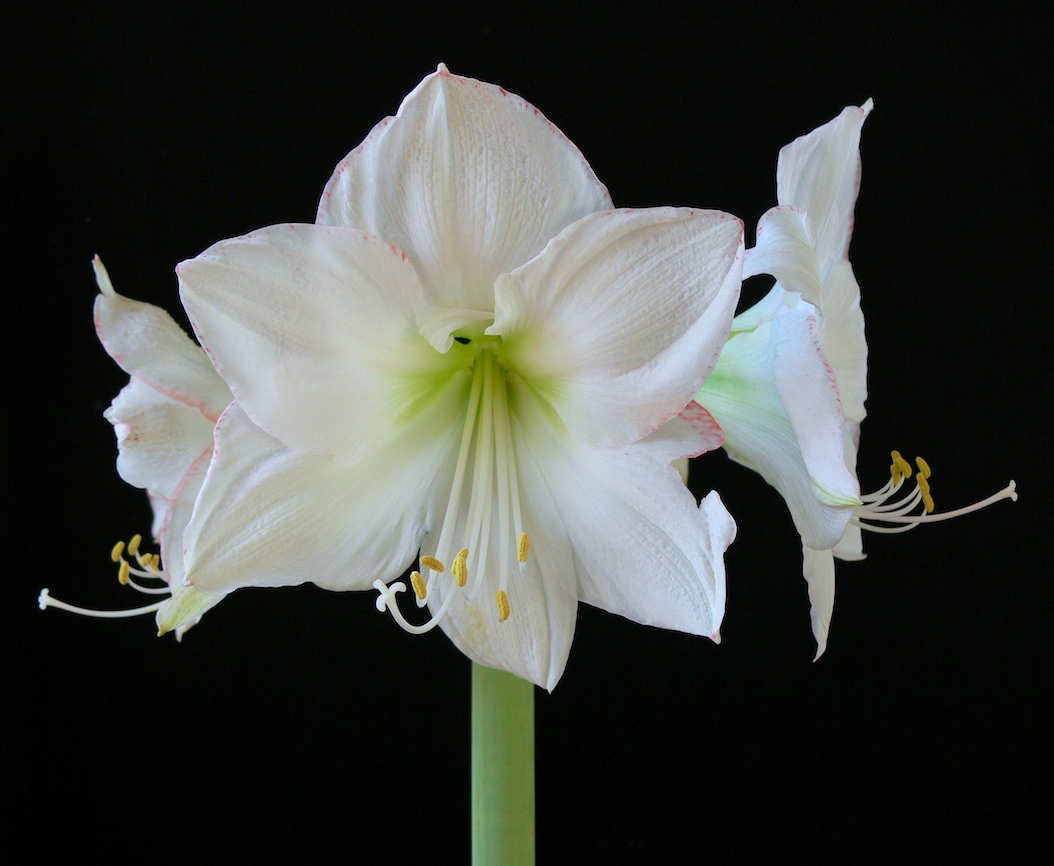
It seems clear that ‘President Johnson’ as registered is of the largest types (most “Picotee” clones sport decidedly small-midsize flowers). Brought to us by Oudendam, who also produced the large classic white ‘Christmas Gift’, so perhaps it stems from the same breeding program. It certainly adds to the fray, and its type is sold as ‘Picotee’ as often as some other clones are sold as ‘President Johnson’.
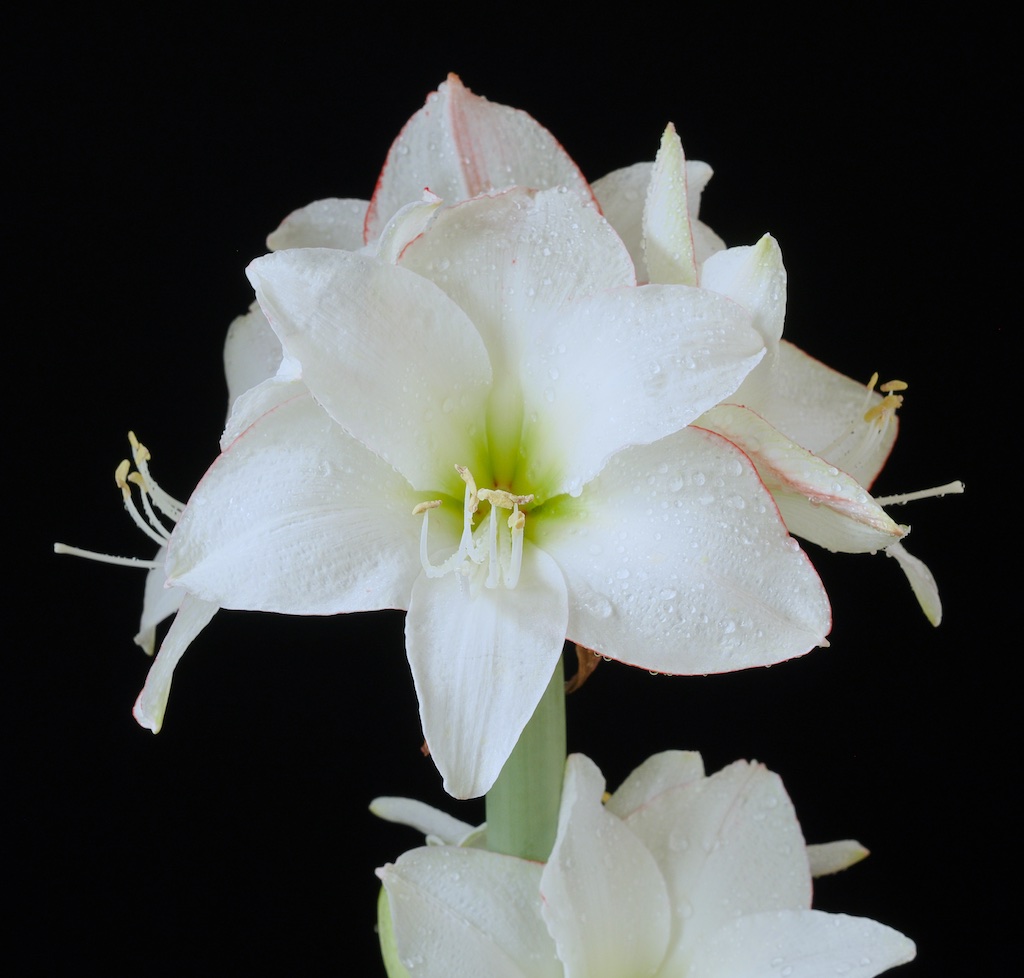
The interest in these beautiful selections apparently caught the eye of popular American artist/teacher Bob Ross who painted a version with bold red edges on a ruffled white flower. In 1997 Leo Berbee honored him posthumously by naming a picotee cultivar after him. Knowing the work of Mr. Ross, it certainly it must have been of the type with more, not less red marking!
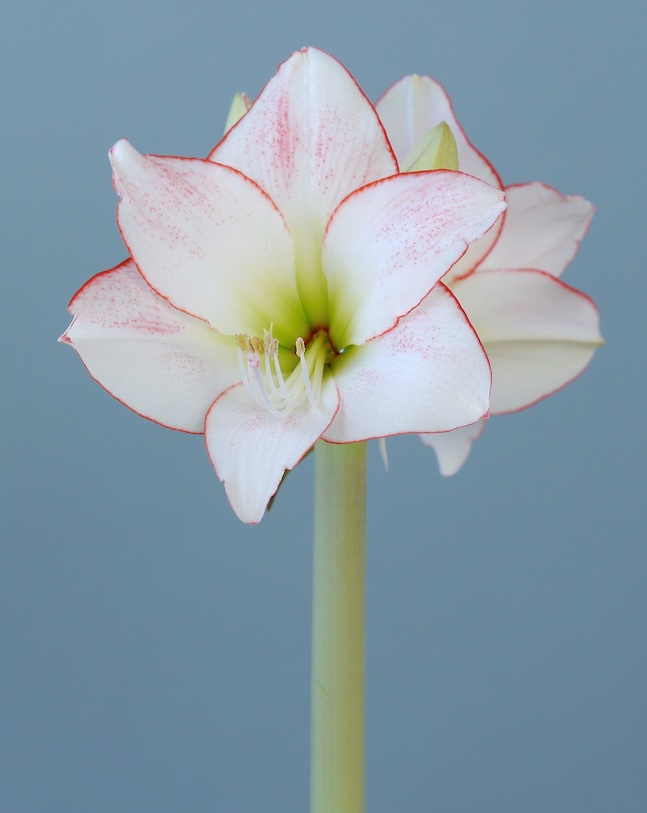
It is clear that these pristine white clones with various amounts of red edging are beloved by consumers, as offerings of ‘Picotee’ perennially sell out at many supply houses. They certainly make for an elegant presentation, and most would agree they are equally as refined as they are showy. Taking the theme into ever grander territory, Marko Penning has created a suite of Picotee based hybrids that are wonderfully exemplified by the likes of ‘Showmaster’ and ‘Temptation’. Other breeders have responded to their deserved popularity with hybrids such as Berbée Amarylliscultures’ ‘Stardust’ and generously speckled ‘Spotlight’ by Amaryl C.V. It should come as no surprise that new versions of Picotee will continue to emerge; lately Penning has shown ‘Picasso’ on its website for example. It appears this clone may already be in circulation under the ‘Picotee’ umbrella. Veronica Read’s book also (wisely) treats ‘Picotee’ as a rather fluid group rather than a distinct individual clone, which was welcome reading in light of the bevy of different versions Emaryllis has encountered over the years.
Add the presence of Andre Barnhoorn’s ‘Stips and Stripes’ on the stock photo sites, and it seems clear that both new variants on the original Picotee theme as well as clearly influenced hybrids will be delighting new generations of amaryllis fans, wether their flowers stay neatly between the lines or not.

Leave a Reply